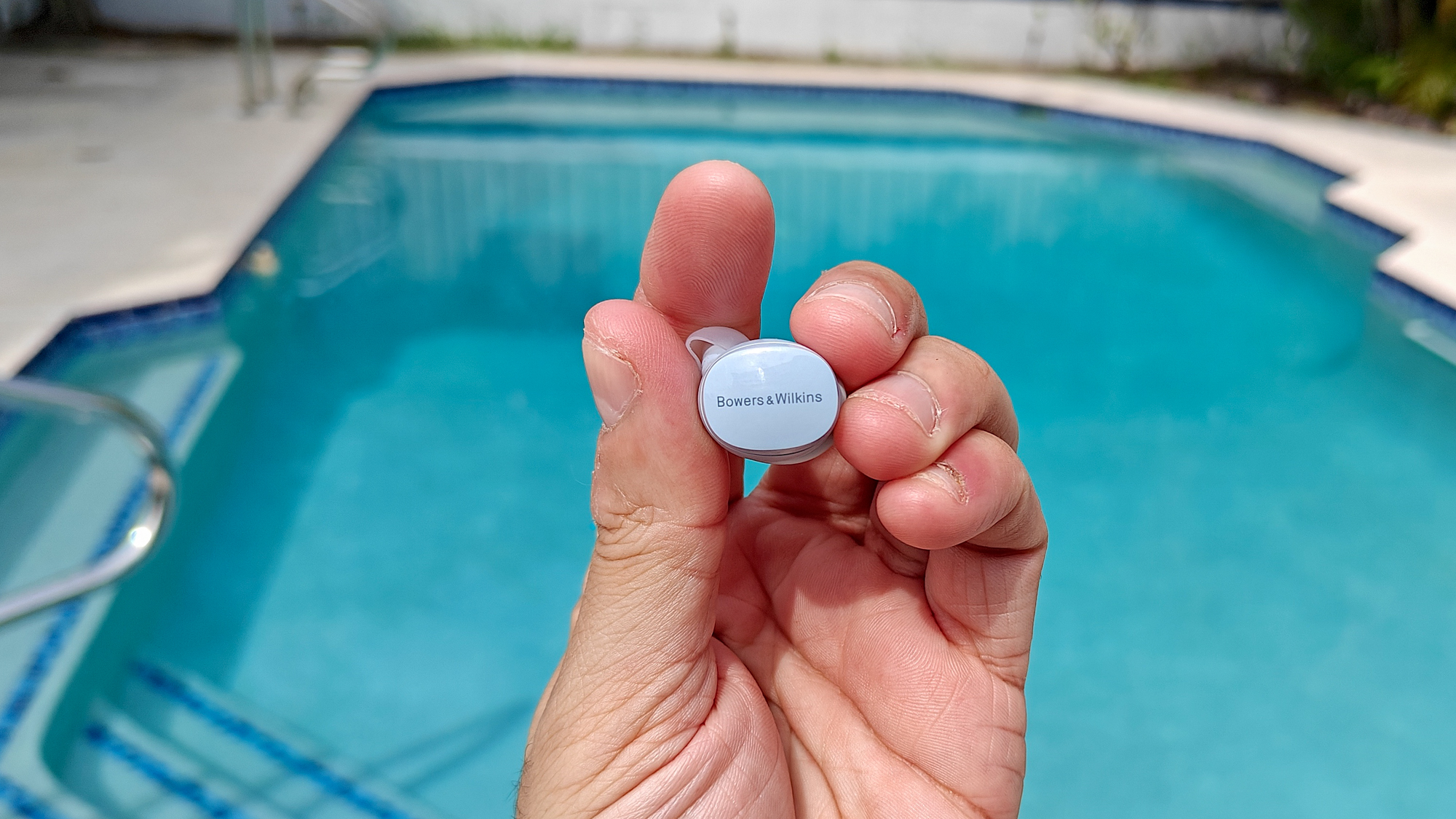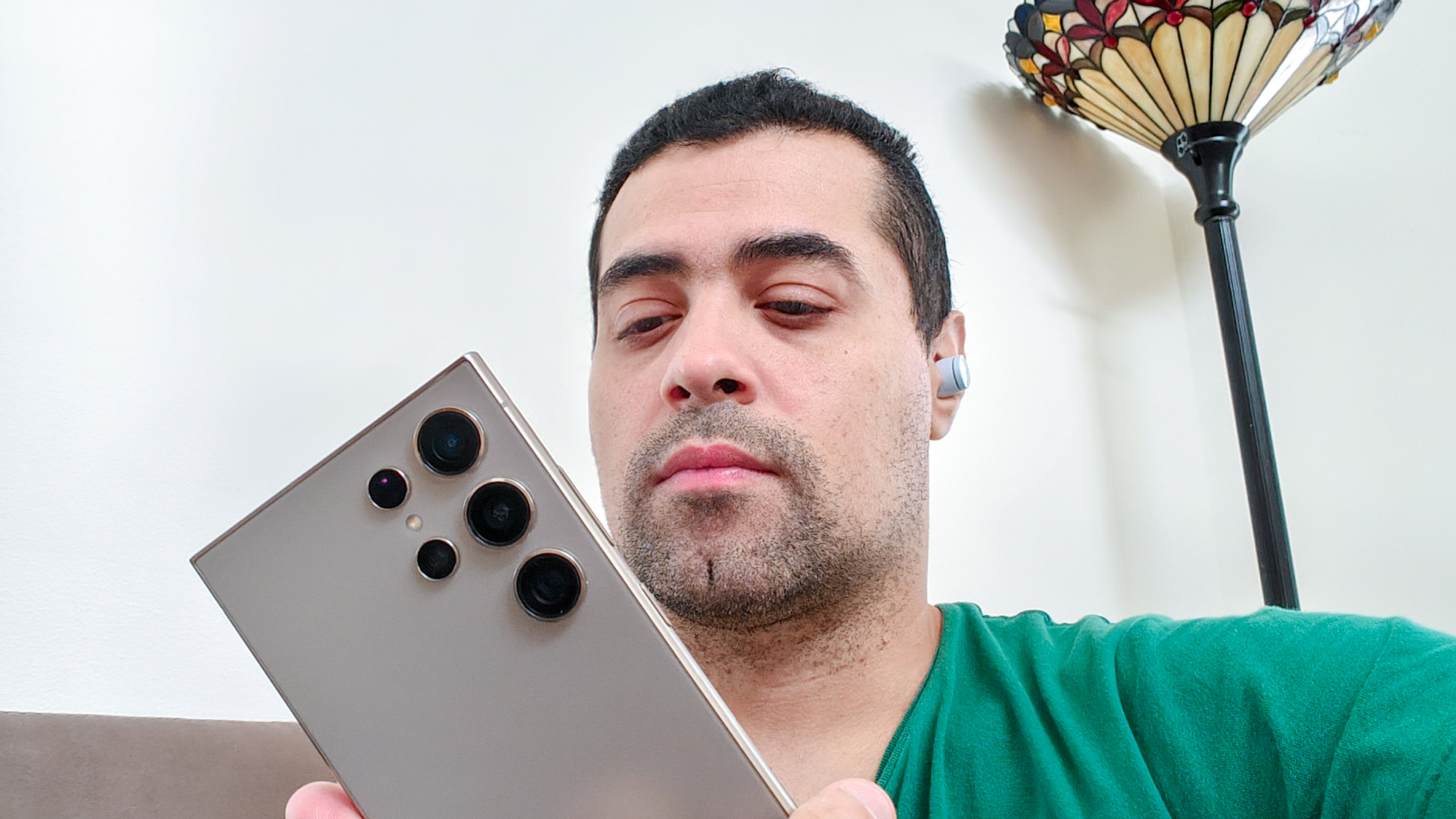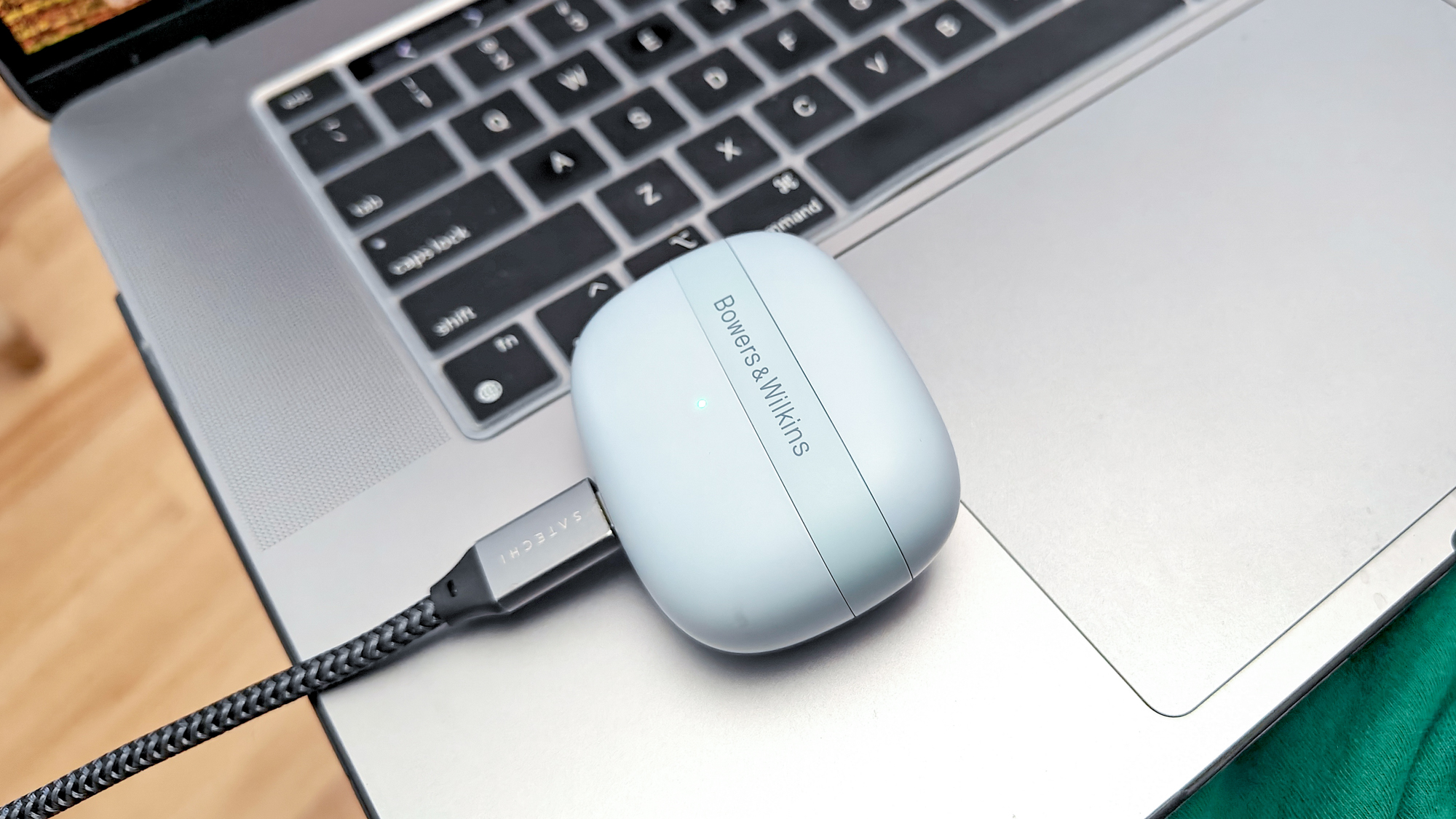Tom's Guide Verdict
he latest mid-range buds from Bowers & Wilkins maintain the brand’s legacy sound performance. So, what happened to everything else?
Pros
- +
Enticing sound with hi-res playback
- +
Serviceable ANC modes
- +
Moderate battery life
Cons
- -
Awful connectivity
- -
Scarce feature set
- -
Undependable controls
- -
Downgraded design
Why you can trust Tom's Guide
Price: $249 / £187 / AU$367
Colors: Cloud grey, forest green, glacier blue, storm grey
Battery life (rated): 8 hours (ANC on), 24 hours (charging case)
Connectivity: Bluetooth 5.4 (codec support: SBC, AAC, aptX Classic, aptX Adaptive)
Durability: Earbuds rated to IP54
Size: 2.55 x 1.14 x 2.04 inches (charging case)
Weight: 0.24 ounces (per bud); 1.6 ounces (charging case)
The Bowers & Wilkins Pi6 join the flagship Pi8 as the latest additions to the brand’s true wireless lineup. These buds welcome back series staples such as active noise cancellation and sleek aesthetics, plus improvements to Bluetooth playback, connectivity, and sound. Or so we’re led to believe based on their robust spec sheet that features aptX Adaptive wireless transmission, Bluetooth 5.4 with multipoint technology, and extra drive units.
Audio is outstanding on the Pi6. The same can’t be said about the buds’ other facets, which are middling or severely disappointing. Not exactly the description one expects from wireless buds billed as a luxury alternative to the top-selling AirPods Pro 2.
Here’s my complete take on the Bowers & Wilkins Pi6.
Bowers & Wilkins Pi6 REVIEW: Cheat sheet
- What is it? B&W’s new mid-range buds with ANC, hi-fi sound, and multiple connectivity options.
- Who is it for? Audiophiles who want upscaled sound at an attainable price.
- What does it cost? $249.
- What do we like? Their dynamic sound with hi-res Bluetooth playback and passable noise reduction.
- What don’t we like? The limited feature set, poor connectivity, and unreliable controls.
Bowers & Wilkins Pi6 review: Price & availability

You can purchase the Pi6 for $249 / £187 / AU$367 on B&W’s website or popular online retailers like Amazon and Crutchfield. Four colors are sold: Cloud Grey, Forest Green, Glacier Blue, and Storm Grey.
The Pi6 share the same MSRP as the AirPods Pro 2, though the latter are frequently on sale for as low as $189. B&W’s buds are also less expensive than high-end favorites like the $299 Bose QC Ultra Earbuds and Sony WF-1000XM5. Bargain hunters seeking more affordable options with hi-res audio should consider the $78 OnePlus Buds 3, which are currently ranked the best cheap wireless earbuds overall.
Bowers & Wilkins Pi6 review: Design

- Stylish, but less fancy than previous entries
- Enhanced comfort
- Slightly loose fit
These buds look chic and more minimalist than the Pi5 and Pi7, but those first-gen models come with swankier designs, highlighted by a metal cylinder that doubles as a touch panel. B&W implemented a new flat touch panel with branding, full plastic construction, and surrounding mic openings. An IP54 rating protects the Pi6 from dust and water damage.
The charging case is basic compared to B&W’s previous creations. It’s an exact representation of the buds, in terms of aesthetics and craftsmanship. This version also lacks the audio retransmission feature via aux cable connection that the Pi7 and Pi8 cases support.
Comfort is much better on the Pi6 than their predecessors. The hard plastic exterior doesn’t press up against your ears, extending wearability for several hours before fatigue sets in. Fit can be a concern for road warriors; the silicone tips don’t form a tight seal for optimal in-ear stability.
Bowers & Wilkins Pi6 review: Features

- Buggy companion app
- Very light feature set
Download the Bowers & Wilkins app (Android/iOS) for access to the Pi6’s major features. Just know that what’s available is in short supply. You get ANC mode toggles, control customization, shortcuts to hi-fi streaming services (e.g., Qobuz, Tidal), streaming quality selection for mobile and wi-fi, and a two-band EQ that only allows for bass and treble adjustment. That isn’t much. On top of that, the app has bugs that need to be flushed out. There were many times when the software would crash or not recognize my buds while paired to an Android device.
Bowers & Wilkins Pi6 review: Controls

- Standard control scheme
- Iffy motion, touch, and voice controls
A full suite of media controls are at your disposal, including call management, digital assistance, listening mode activation, playback, and volume. These can be activated through the single-/double-/triple-tap or long-hold gesture. The touch controls often require second attempts to acknowledge and register intended commands. Wear detection only seems to work when paired to one device; the feature was inactive on my unit when using Bluetooth multipoint.
Voice activation is not available, meaning you can’t fire up the Google Assistant or Siri by saying its wake-word phrase. Your native assistant can only be activated manually, and the results vary, depending on the voice command. Siri would mistake “calendar” for “alarm” and “open Apple Music” for “open Apple TV.” Google Assistant didn’t give me much trouble and understood most commands accurately.
Bowers & Wilkins Pi6 review: Sound quality

- Excellent audio performance across all platforms
- Hi-res streaming via aptX Adaptive
- Non-impactful EQ
Much to the chagrin of B&W, the Pi6’s sound quality isn’t “class-leading” as indicated on the product page. However, it is superb and outperforms most mid-range and high-range wireless earbuds. New bio-cellulose drive units deliver better clarity and high-frequency detail and less distortion. Qualcomm’s aptX Adaptive codec is onboard for hi-res playback on compatible Android devices.
The familiar synth-based pattern on Katy Perry’s “I’m His, He’s Mine” sounded bright and crisp, and it blended nicely with the booming 808 drums that knocked hard without muddying up the soundscape. Instrument separation was fantastic on The Weeknd’s “Dancing in the Flames (Acoustic Version).” The different guitar strings were audibly distinctive and reproduced incredibly well, while the singer’s vocals shone over the melodic production. Even up-tempo tracks like Dombrensky’s remix of Taylor Swift’s “I Can Do It With A Broken Heart” were well represented. This version of the electropop song fed my ears a balanced frequency range with emphatic bass that resonated throughout the listen.

AptX Adaptive makes a huge difference in mobile sound. The codec dynamically scales bitrate up to 420 kbps when listening to the best music streaming services. Standard codecs like SBC (Android) and AAC (iOS/macOS) also perform well. I was pleased with the fidelity of Apple Music and Spotify tracks streamed from my MacBook Pro.
You will need strong connectivity to enjoy this level of sound over Bluetooth, and sadly, that’s not always guaranteed (more on that later).
Bowers & Wilkins Pi6 review: Active Noise Cancelation

- Non-adjustable, substandard ANC
- Useful transparency mode
Noise reduction on the Pi6 might pale in comparison to the best noise-canceling earbuds, but you can get some use out of the feature. Up to 80 percent of low- and mid-frequency sounds are silenced. The buds keep droning noises and vocals to a minimum. High-frequency sounds are loud and seep onto the soundstage, which can affect listening sessions. Wind resistance is surprisingly good and decreases harsh whoosh effects.
Pass-through mode is B&W’s transparency mode and it works noticeably better than Noise Cancellation mode. It felt great to communicate clearly with the missus from across the room and not take off the buds. The feature also let me keep tabs on environmental sounds during outdoor walks; chatty pedestrians and oncoming cars were audible.
Bowers & Wilkins Pi6 review: Call quality and connectivity

- Decent voice calling
- Horrendous wireless performance
B&W’s three-mic array provides quality voice capture to hear people on the opposite end clearly. You’ll need to be in quiet settings to enjoy this because ANC doesn’t hold up as well as it does when listening to music.
For buds boasting Bluetooth 5.4, the Pi6 demonstrate the connectivity of an early true wireless prototype. You’ll either experience serious audio stutter or the buds will disconnect from your paired device when stepping out of a 20-foot range. This occurs with multipoint technology as well. Furthermore, the buds would reconnect with my last paired device when sitting in the charging case.
Bowers & Wilkins Pi6 review: Battery life

- Favorable playtime (per charge)
- No wireless charging
- Subpar quick charging
A full charge gets you up to 8 hours with ANC on and the charging case holds an additional 16 hours, rounding out total battery life to 24 hours. ANC playtime is slightly longer than the AirPods Pro 2 (6 hours), but full battery life is noticeably lower than what Apple’s MagSafe charging case holds (up to 30 hours). Furthermore, the Pi6’s charging case doesn’t support wireless charging, and quick charging is some of the category’s weakest with a 15-minute charge translating to 2 hours of use.
Bowers & Wilkins Pi6 review: Verdict
Unless you’re a diehard brand enthusiast who wants B&W’s superb sound signature for less than the flagship Pi8, I suggest skipping the Pi6. Terrific audio with hi-res playback isn’t enough to justify the $250 price tag. Their finicky controls, lack of functional variety, and wonky connectivity diminish their value. You can get better overall performance from low-priced audiophile buds like the $169 Cambridge Audio Melomania M100.
More from Tom's Guide
A lifestyle journalist with an affinity for consumer products, Alex has over a decade of experience and has worked with popular publications such as Complex, Thrillist, Men’s Health, Gear Patrol, AskMen, and Hoop Magazine. He currently focuses on audio, reviewing the most coveted headphones in the market for both Tom’s Guide and Laptop Magazine.


